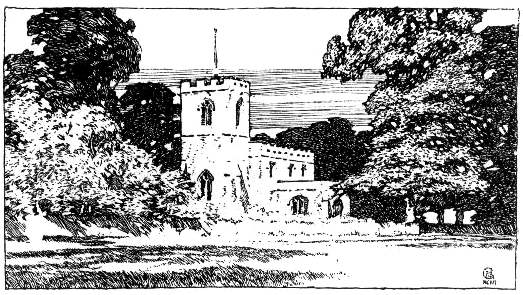|
A Farm at Hinxworth |
Ancient door at Hinxworth Place |
Hinxworth
Adjacent Parishes: Ashwell, Astwick (Beds), Caldecote, Dunton (Beds), Edworth (Beds)
Hinxworth is in the Odsey Hundred
|
A Farm at Hinxworth |
Ancient door at Hinxworth Place |
HINXWORTH is a village in Odsey hundred, 5 miles north of Baldock station, in sight of the chalk range, at the source of a small brook. Roman antiquities have been found here. The area of the parish is 1,440 acres, and the population, in 1841, was 333. The assessment to the Income Tax was £2,006, in 1842. The living, a rectory, value £300, in the gift of W. Hale, Esq., and incumbency of Rev, Benjamin Donne. Here is an ancient parish church, and a national school.
Briant, William, blacksmith
Kitchener, John, shoemaker
Kitchener, Joseph, butcher & shopkeeper
Kitchener, William, shopkeeper
Parker, Thomas, farmer, Dewmead
Parker, William, farmer, Pinnacle Hall
Sale, Edward, farmer
Sale, John, basket maker
Sale, Richard, farmer
Squire, John, carpenter
Stanton, Edmund, 'Three Horse Shoes'
Stanton, Edmund, shopkeeper & carpenter
Steadhall, Miss Mary Ann, Schoolmistress
Letters received through Baldock Office
Post Office Directory, 1850

Hinxworth Parish Church
From Highways and
Byways in Hertfordshire
March 2003
Elsie Galbraith (egadflora @t aol.com) of Worcester asks: In the census of 1881 a remarkable number of people in Hinxworth are described as 'fossil diggers' - this is given as their occupation. Was the area rich in fossils at that time, and if so, what kind of fossils would they be, and was there a ready market for the finds in order to make this a lucrative form of employment?
The answer is not as romantic as it seems today. If you look at Hinxworth on the old maps web site you will find several coprolite works - and there were even more in the adjacent parts of Bedfordshire and Cambridgeshire. Elsewhere in the world labourers were excavating the vast quantities of bird guano for use as fertilizer - and the same thing was happening at Hinxworth. There was one big difference. The substance at Hinxworth was believed to be fossilised dinosaur dung!! While there were many items which would attract collectors of fossils, the "fossil diggers" listed in the census would typically have been low grade labourers digging up the fossil dinosaur "do" by the ton to be ground up and spread on fields by farmers to improve their crops.
There is an extensive web site dedicated to coprolites (see list of topics at the bottom of the home page) - which includes a lot of interesting background.
Topics: War memorials and Rolls of Honour - give details of War Memorial
See also Vital Records
If you know of other books, websites, etc, relating to this place, please tell me.
| April 2010 | Church post card added |